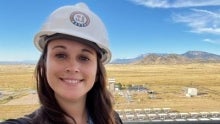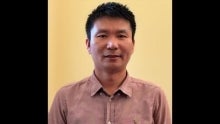Rensselaer Doctoral Student Conducting Research at Los Alamos National Lab
Rensselaer Polytechnic Institute doctoral student Emily de Stefanis is one of 60 recipients of the U.S. Department of Energy (DOE) Office of Science Graduate Student Research (SCGSR) award. The SCGSR program places students with mentors at DOE national labs, where students learn from top experts in their field and conduct research in state-of-the-art facilities.De Stefanis will spend 2024 at the Los Alamos National Laboratory in New Mexico working on her research with experts in the field of nuclear materials.
Rensselaer Doctoral Student Conducting Research at Los Alamos National Lab
Rensselaer Polytechnic Institute doctoral student Emily de Stefanis is one of 60 recipients of the U.S. Department of Energy (DOE) Office of Science Graduate Student Research (SCGSR) award. The SCGSR program places students with mentors at DOE national labs, where students learn from top experts in their field and conduct research in state-of-the-art facilities.De Stefanis will spend 2024 at the Los Alamos National Laboratory in New Mexico working on her research with experts in the field of nuclear materials.
Rensselaer Polytechnic Institute Welcomes Tom Capek ’86 to Board of Trustees
Rensselaer Polytechnic Institute has announced the addition of Thomas G. Capek ’86, senior vice president and chief engineer at Corning Incorporated, to Rensselaer’s Board of Trustees. Corning is one of the world's leading innovators in materials science and has a longstanding relationship with RPI supporting research, philanthropy, and student recruitment. Capek previously served on the Dean’s Leadership Council in RPI’s School of Engineering. As a Board of Trustees member, Capek sits on the Academic Affairs and Research Committee and the Student Life Committee.







